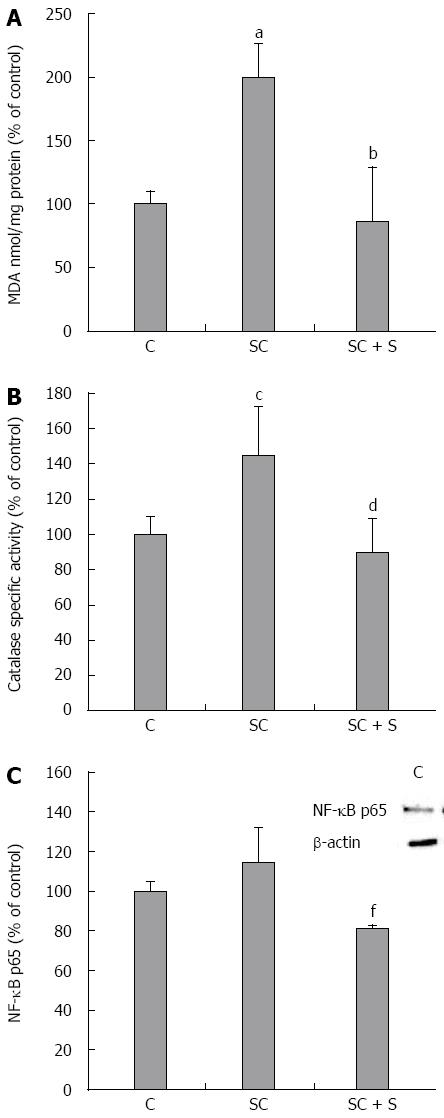Copyright
©The Author(s) 2016.
World J Gastroenterol. Jul 14, 2016; 22(26): 6016-6026
Published online Jul 14, 2016. doi: 10.3748/wjg.v22.i26.6016
Published online Jul 14, 2016. doi: 10.3748/wjg.v22.i26.6016
Figure 5 Effects of silybin on oxidative stress markers.
In control and steatotic FaO cells incubated in the absence or in the presence of silybin 50 μmol/L we assessed. A: The intracellular level of MDA (pmol MDA/mL x mg of sample protein) quantified by TBARS assay data are expressed as percentage values with respect to controls and normalized for total proteins; B: Catalase specific activity (micromoles of decomposed H2O2 per min/mg of sample protein) evaluated by spectrophotometric assay, data are expressed as percentage values with respect to controls and normalized for total proteins. C: Densitometric analysis of nuclear NF-κB/p65 evaluated by Western blotting; β-actin was the protein loading control used as housekeeping gene for normalization; data are expressed as percentage values with respect to controls. Values are mean ± SD from at least three independent experiments. ANOVA followed by Tukey’s test was used to assess the statistical significance between groups Significant differences are denoted by symbols: aP≤ 0.001, cP≤ 0.01 C vs OP and bP≤ 0.001; dP≤ 0.01; fP≤ 0.05 OP vs silybin.
- Citation: Vecchione G, Grasselli E, Voci A, Baldini F, Grattagliano I, Wang DQ, Portincasa P, Vergani L. Silybin counteracts lipid excess and oxidative stress in cultured steatotic hepatic cells. World J Gastroenterol 2016; 22(26): 6016-6026
- URL: https://www.wjgnet.com/1007-9327/full/v22/i26/6016.htm
- DOI: https://dx.doi.org/10.3748/wjg.v22.i26.6016









